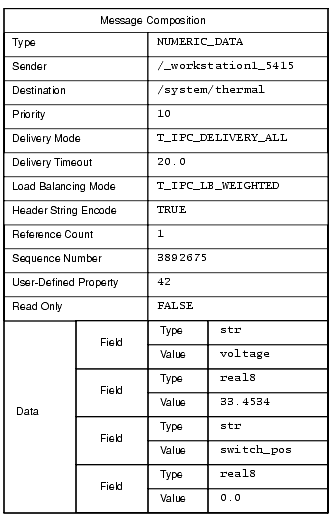
All of the different kinds of messages are classified by message types. For example, numeric variable data is typically sent in a NUMERIC_DATA type of message, and an operator warning is typically sent in a WARNING type of message. A SmartSockets application can use both the standard message types provided with SmartSockets, as well as user-defined message types.
A message (C type T_IPC_MSG) is composed of several parts or properties. The most important property is the message data. The other message properties are collectively referred to as the message header.
A message is composed of these properties:
Figure 1 shows an example of a standard NUMERIC_DATA message. The data part of this example message is a series of variable name-value pairs (voltage = 33.4534, switch_pos = 0).

|
TIBCO SmartSockets™ User’s Guide Software Release 6.8, July 2006 Copyright © TIBCO Software Inc. All rights reserved www.tibco.com |